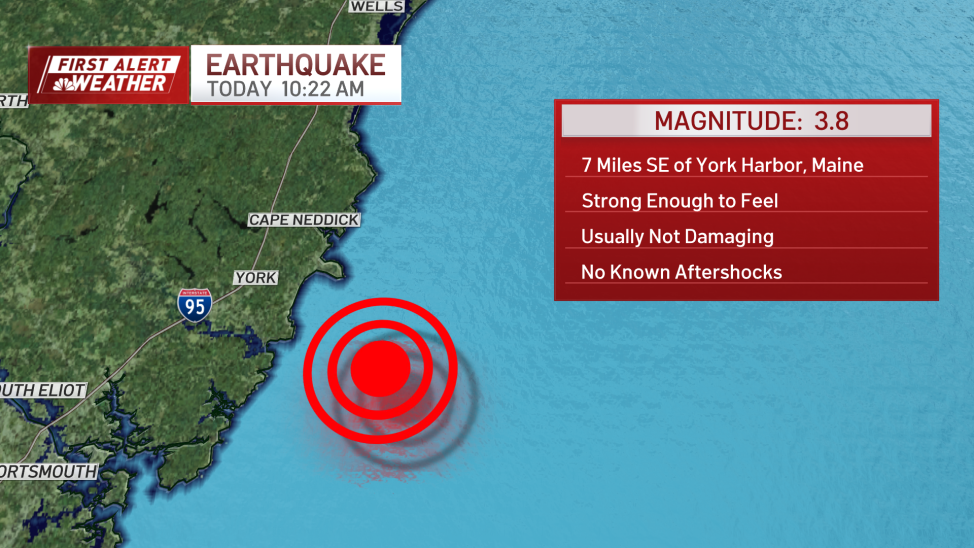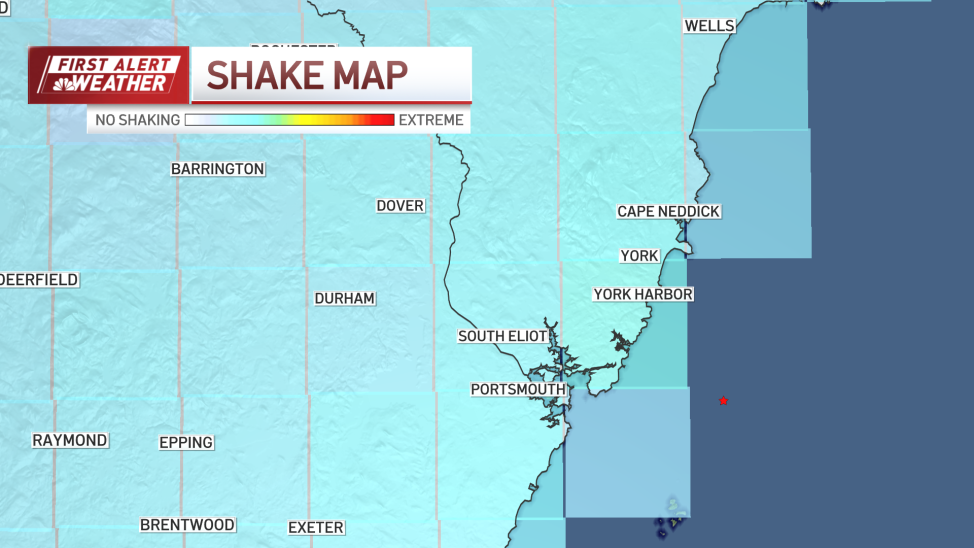
Earthquake : Learn about earthquake safety, the recent Boston earthquake, its impacts, and how to prepare for future tremors. Stay informed with trusted resources and actionable tips.
Table of Contents
Earthquake Preparedness: Lessons from the Recent Boston Earthquake
Earthquakes, though relatively rare in regions like Boston, remind us of the unpredictable power of nature. On Monday, Boston residents experienced a minor earthquake that shook the city, leaving many questioning the region’s seismic activity and their preparedness. This article delves into earthquake safety, the science behind these natural phenomena, and essential tips to ensure readiness.
What Happened in Boston?
On Monday morning, Boston residents reported feeling tremors, as confirmed by seismologists. Although the earthquake was minor, it highlighted the fact that seismic activity isn’t restricted to traditionally earthquake-prone areas like California. This incident underscores the importance of being informed and prepared, even in regions where earthquakes are less common.
According to the United States Geological Survey (USGS), minor earthquakes in regions like Boston are often the result of geological stresses or faults shifting beneath the surface. While these events may not cause significant damage, they serve as wake-up calls for preparedness.
For more details, check the original news report from NBC Boston.
What Causes Earthquakes?
Earthquakes occur when tectonic plates beneath the Earth’s crust shift, creating energy that manifests as ground shaking. Common causes include:
- Tectonic Activity: Movement of plates along fault lines.
- Volcanic Activity: Eruptions causing local seismic events.
- Human Activities: Activities like mining or reservoir-induced seismicity.
The Boston earthquake likely resulted from tectonic stress along regional fault lines, even though New England isn’t known for high seismic activity.
Are Earthquakes Common in Massachusetts?
While Massachusetts is not part of the most active seismic zones, it is not immune to earthquakes. Historical records show minor tremors occurring sporadically. The 1755 Cape Ann Earthquake, for example, was one of the most significant events in the region, with a magnitude of 6.0.
If you’re interested in learning more about how different regions handle natural disasters, check out the resources available on The Newsify.
The Importance of Earthquake Preparedness
Regardless of the frequency of earthquakes in your area, being prepared is crucial. Earthquakes can strike without warning, leaving little time to react. Here’s how you can prepare:
1. Create an Emergency Plan
- Establish a communication strategy for your family.
- Identify safe spots in your home, such as under sturdy tables.
- Plan evacuation routes if necessary.
2. Assemble an Emergency Kit
- Non-perishable food and water for at least three days.
- Flashlights, batteries, and first aid supplies.
- Copies of essential documents and cash.
3. Secure Your Home
- Anchor heavy furniture to walls.
- Install safety latches on cabinets.
- Ensure gas lines and appliances are secured to prevent leaks.
4. Stay Informed
For more safety tips and disaster preparedness guides, visit The Newsify.
The Role of Technology in Earthquake Detection
Modern advancements in technology have significantly improved earthquake detection and early warning systems. In regions like Boston, seismic monitoring networks detect even minor tremors, providing crucial data to scientists and local authorities.
Notable Tools and Systems:
- ShakeAlert: An early warning system operational in the United States.
- Seismic Apps: Mobile apps like MyShake provide alerts and safety information.
These tools, coupled with public awareness campaigns, help mitigate the risks associated with earthquakes.
What to Do During an Earthquake
Knowing how to respond during an earthquake can save lives. The key steps include:
- Drop, Cover, and Hold On: Get low to the ground, take cover under sturdy furniture, and hold on until shaking stops.
- Stay Indoors: Avoid running outside, as falling debris poses significant risks.
- If Outdoors: Move to an open area away from buildings and power lines.
Post-Earthquake Recovery and Safety
After the shaking subsides, it’s essential to prioritize safety and recovery:
- Check for Injuries: Administer first aid if needed and call for emergency assistance.
- Inspect for Damage: Look for structural issues, gas leaks, or electrical hazards in your home.
- Stay Updated: Follow local news and official channels for updates on aftershocks or safety advisories.
For a comprehensive guide on post-disaster recovery, visit The Newsify.
Learning from Other Earthquakes
The Boston earthquake, though minor, draws attention to the global impact of seismic events. Recent devastating earthquakes in Turkey and Syria serve as stark reminders of the destruction these natural disasters can cause.
To learn more about earthquake preparedness worldwide, visit the International Seismological Centre (ISC) website at https://www.isc.ac.uk/.
Why Preparedness Matters
Earthquakes may not be frequent in Boston, but this recent event highlights the importance of readiness for all types of natural disasters. Staying informed, having a plan, and using the right resources can make a significant difference.
For in-depth articles on disaster preparedness and safety, check out The Newsify.
Earthquake Information
- International Seismological Centre: https://www.isc.ac.uk/
Earthquake Hits Maine: A Look at One of the Strongest Quakes in Recent History
The state of Maine, known for its picturesque coastlines, quaint towns, and abundant wildlife, seldom finds itself in the national spotlight for geological activity. However, on a quiet Monday morning, that changed when a magnitude 3.8 earthquake struck off the coast of southern Maine, capturing the attention of residents and experts alike. Occurring at 10:22 a.m. approximately 6.2 miles (10 kilometers) southeast of York Harbor, this tremor is now tied as the third-strongest earthquake to originate in Maine since 1997, according to the Maine Geological Survey (MGS). Here, we dive into the details of this seismic event, its significance, and Maine’s broader earthquake history.
The January 22 Earthquake: What We Know
The U.S. Geological Survey (USGS) reported that the magnitude 3.8 earthquake occurred offshore, sending ripples through the southern Maine coastline and beyond. Residents in York Harbor described feeling intense vibrations, with one local stating, “It felt like my whole house was shaking.” This anecdote highlights the significant impact that even moderate earthquakes can have in regions unaccustomed to frequent seismic activity.
Despite receiving multiple 911 calls, local authorities, including the York Police Department, confirmed that there were no injuries or visible damage to roads or buildings. However, the quake was felt not only in Maine but also in neighboring states, including New Hampshire, Massachusetts, Vermont, Rhode Island, and Connecticut. Reports even came from as far away as Pennsylvania, showcasing the far-reaching effects of this seismic event.
Maine’s Earthquake History
While Maine is not a hotbed of seismic activity like California or Alaska, the state does experience earthquakes every year. Most are minor, registering below 2.0 on the Richter scale, making them virtually undetectable to humans. According to the Maine Geological Survey, several quakes with magnitudes of 2.0 or greater occur annually in the state. In 2024 alone, Maine recorded four such earthquakes strong enough to make it onto the MGS’s official list.
The strongest quake of 2024 before January’s event occurred on July 28 in West Gardiner, registering a magnitude of 2.8. While this pales in comparison to the recent 3.8 quake, it serves as a reminder of Maine’s underlying geological dynamics.
Historically, the strongest earthquakes in Maine in the past three decades include:
- A magnitude 4.5 earthquake in East Waterboro on October 16, 2012.
- A magnitude 4.2 earthquake near Cadillac Mountain in Acadia National Park on October 2, 2006.
Both of these quakes were more powerful than Monday’s, but such events remain rare in Maine’s history. For perspective, a magnitude 4.8 earthquake in northern New Jersey on April 5, 2024, was felt weakly across southern Maine and was one of the strongest tremors ever felt in the region.
Understanding Earthquake Magnitudes
To appreciate the significance of Maine’s recent earthquake, it’s essential to understand the Richter scale. This logarithmic scale measures the energy released by an earthquake. A 3.8 magnitude earthquake releases approximately 238,000 joules of energy—enough to be felt across a wide area but typically not strong enough to cause severe damage.
Earthquakes under 2.0 are considered “microquakes” and are rarely felt by people. These smaller quakes often go unnoticed but are meticulously recorded by geological instruments. In Maine, the USGS has documented numerous microquakes, such as a magnitude 1.9 near Sebec on January 2, 2024, and a magnitude 1.8 near Fort Fairfield on January 17, 2024. These events highlight the constant, albeit minor, seismic activity in the region.
Why Do Earthquakes Happen in Maine?
Maine’s seismic activity is primarily caused by tectonic forces deep beneath the Earth’s surface. Unlike regions located along active fault lines, Maine’s quakes result from the gradual shifting and adjustment of the Earth’s crust in response to distant tectonic pressures. These intraplate earthquakes, as they are known, occur far from plate boundaries but can still produce noticeable tremors.
The geology of Maine—composed of ancient bedrock—also plays a role. The state’s hard, crystalline rocks efficiently transmit seismic waves, allowing even minor earthquakes to be felt over larger distances.
How Residents and Authorities Responded

In the immediate aftermath of the earthquake, residents in York Harbor and nearby areas took to social media to share their experiences. Some described hearing a low rumble before feeling the shaking, while others reported startled pets and swinging light fixtures. Despite the unexpected nature of the quake, there was no widespread panic, and local authorities were quick to reassure the public.
The Maine Emergency Management Agency (MEMA) emphasized the importance of earthquake preparedness, even in a state where such events are rare. MEMA recommends that residents “Drop, Cover, and Hold On” during an earthquake to minimize the risk of injury. The agency also encourages homeowners to secure heavy furniture and ensure their homes are earthquake-resistant.
The Broader Impact on New England
Maine’s recent earthquake serves as a reminder that seismic activity is not limited to well-known hotspots. Across New England, small-to-moderate earthquakes have historically occurred, often surprising residents unaccustomed to such phenomena. The 3.8 magnitude quake off York Harbor was felt across much of the region, underscoring the interconnectedness of New England’s geology.
New Hampshire, Massachusetts, and other neighboring states reported similar reactions, with residents describing the sensation as a brief but intense jolt. While the effects were mild compared to those experienced in more earthquake-prone areas, the event highlighted the need for regional preparedness.
What Can We Learn?
The January 22 earthquake in Maine is a significant event in the state’s recent seismic history. While it caused no injuries or damage, it serves as a valuable reminder of the importance of understanding and preparing for natural phenomena. Maine’s geological history, characterized by infrequent but noteworthy earthquakes, offers insights into the complex dynamics beneath the Earth’s surface.
As scientists continue to monitor seismic activity in the region, events like these provide opportunities to educate the public and enhance preparedness. From securing homes to practicing safety drills, small steps can make a big difference in ensuring community resilience.
Maine’s magnitude 3.8 earthquake is a testament to the unpredictable nature of our planet. While the state remains a relatively quiet corner of the world when it comes to seismic activity, this event is a stark reminder that even regions considered geologically stable are not immune to the forces of nature. By studying such events and fostering awareness, Maine and the broader New England region can be better equipped to face future seismic surprises.
Conclusion
The Boston earthquake is a timely reminder that seismic events can occur anywhere. By understanding the science behind earthquakes, preparing for potential risks, and staying informed, you can ensure the safety of yourself and your loved ones.
For more insights, safety guides, and up-to-date news, visit The Newsify. Stay safe, stay prepared!









Leave a Reply